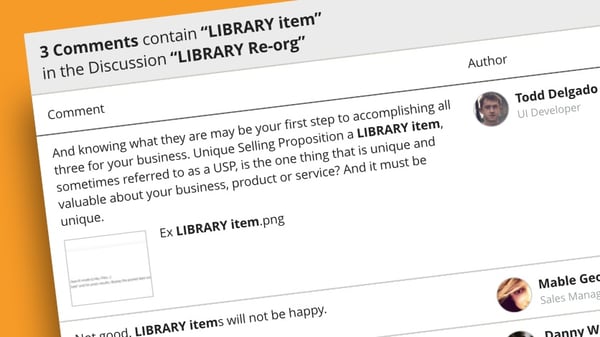
5 min read
Very few companies succeed with a popular intranet. Here's how to become one of the lucky few.
By Hannah Price
Most of us have used a company intranet before. And, for most of us, it was a terrible experience.
Intranets are renowned for their awful user experience. More often than not they’re full of broken links, endless pages, and confusing filing systems.
To help you avoid these problems, we’ve cherry picked six of our top tips. They’ll set you on the right track for a popular company intranet!
You may not want to judge a book by its cover, but the same rule doesn’t apply for company intranets. How visually engaging your intranet is will impact how willing employees are to engage with it, which will ultimately impact its overall success.

Tip!
Technology has come a long way in the past 20 years, so don’t suffer through an intranet that looks like it’s from the nineties. Ditch those lists of blue hyperlinks and look for an intranet that’s aesthetically pleasing!
Of course, appearance isn’t everything. A visually engaging intranet with horrible usability won’t last long. Employees need to be able to find what they’re looking for quickly and easily.
If people have to sift and search through your intranet to find a document or news story, they won’t be willing to come back. Your intranet should help people save time, not eat into it.
Tip!
Usability is what will keep employees coming back to your company intranet (or cause them to abandon it). Look for an intranet that’s easy to maintain, allows you to target information to the right people, and has a stellar platform-wide search function.
This is a slightly more complex topic to untangle, but it’s an important one, so stick with me.
It’s fine for company intranets to be used for more than strictly getting work done. Today’s workforce is very different from it used to be:
“Employee interactions—and therefore workplace culture—are shaped via email, Skype or Slack rather than at the proverbial water cooler of decades past.” [Source]
Digital tools, like company intranets, support workplace behaviours such as encouraging employees to strengthen their relationships.
However, if this is all an intranet does—if it’s solely for social purposes—it’s missing the point and will often fail. Here are the two main reasons:

Tip!
Company intranets should always help employees get their work done, as well as enable social communication. Ensure your intranet provides information, documents, and company updates that employees need. That will make it a hub of activity, and the social side will follow.
The behaviors and habits of leaders trickle down through every company. If your leadership team is refusing to use your new intranet (or simply avoiding it and relying on old tools) then company-wide uptake will be a challenge.
Conversely, if your leaders are posting company updates, commenting on other people’s articles, and sharing photos, employees will flock to your intranet.
In all likelihood, they’ll also start to emulate the behavior of leaders (if encouraged) and start to share updates and comment on others’ posts.
Tip!
If you want viral adoption of your company intranet throughout your business, ensure you’ve got genuine leadership participation. They need to be early advocates for the platform and willing to stay involved.
Use your company intranet to share news from across your company, not just a designated communications person or leader.
There are often hidden gems throughout a business—stories of recently closed deals, or project updates—but they won’t get shared between teams unless employees have:
To remove any roadblocks, look for an company intranet that’s easy for all to use. A marketing coordinator shouldn’t have to learn code to publish an article.
Then, encourage people to share updates or articles they find interesting. When they do, be sure to respond with comments and likes. (This is especially powerful if it comes from the leadership or management teams.)
Finally, if you’re ever using your intranet to ask for people’s feedback or input, they need to know that it’s actually been read and taken into account. Thank them for their insights, then provide updates on how they’re being considered and any changes they can expect to see.

Tip!
Encourage all employees to share their stories, updates, and comments. Then, when they do, recognize them with a response. If you’re shopping for an intranet, bear in mind how user-friendly it is. Get one that even the least tech-savvy employee will embrace and use!
If you wait until the end of the month or week to post a flurry of updates on your intranet, it will inherently be out-of-date. Thus, employees won’t trust or rely upon it as a relevant source for company news, and they’ve got no reason to be logged in from day-to-day.
In turn, if they’re not logged in, they can’t provide timely comments and likes on any other posts that are shared. All of this contributes to a downward spiral of poor intranet participation.
To avoid this, make sure content is published at a regular and frequent cadence. How you achieve this will depend on many things, particularly your company culture and size:
If you have a small-to-medium sized company, you can encourage every employee to share stories and updates at will (like we do at Jostle).
In addition, you can make certain updates mandatory, such as each time the salesperson acquires a new customer, or when the developers release a new feature.
If you have a large company, you may want a more structured approach. A few of our clients have a dedicated intranet team.
This is made up of individuals from different teams across the business. They meet regularly and plan a content calendar and assign responsibilities for certain articles to specific team members.
Tip!
Don’t forget to make your posts, shares, and recognition timely. If you wait until the end of the month to send out a bunch of updates (newsletter style) then the information is already stale. Instead, get everyone to post organically or organize a team of writers who regularly post.
Most of us know intranets as clunky, boring, and frustrating platforms. But, they really don’t have to be that way. If you’re empowered with the knowledge on how to make your intranet a success, it can make your work life (and that of those around you) more productive, streamlined, and enjoyable.
Read more by
Hannah Price
Jostle’s employee success platform is where everyone connects, communicates, and celebrates at work. Find out more at jostle.me. © 2009–2024 Jostle Corporation. All rights reserved.